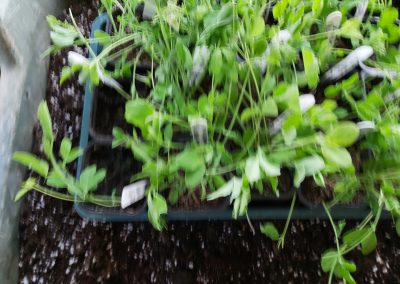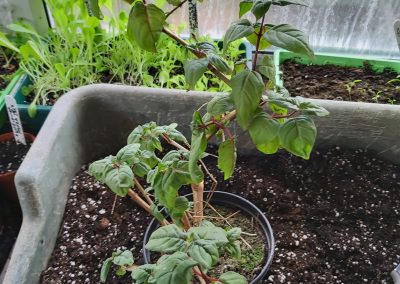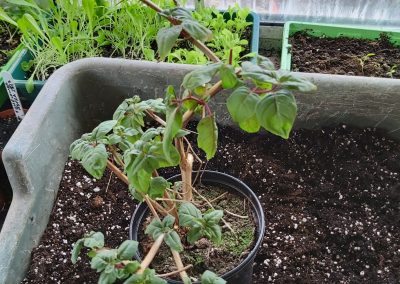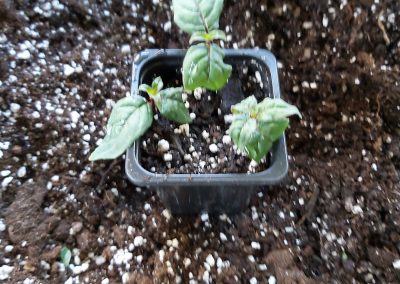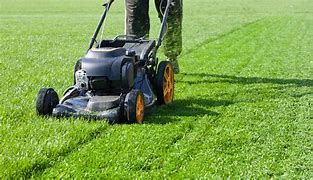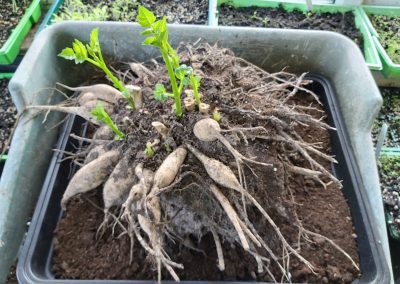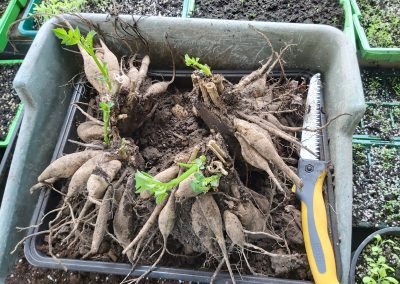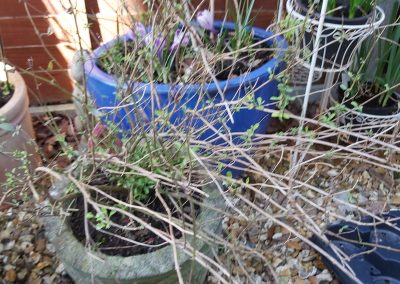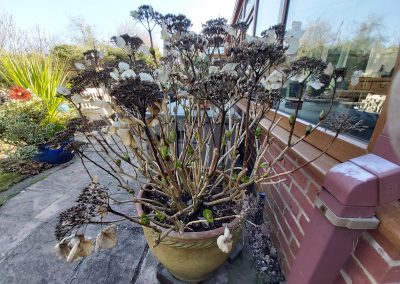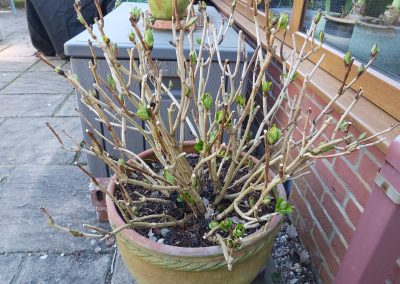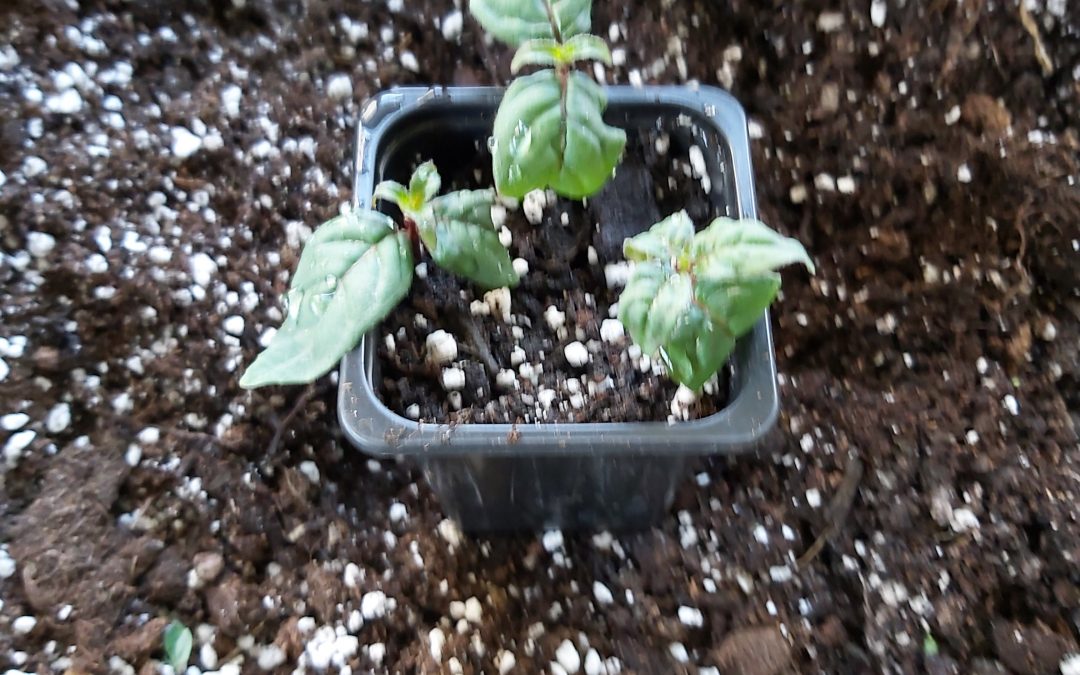
GARDENING DIARY 4TH APRIL 2021
Well, after the lovely weather of the last week, plants have really sprung to life. But unfortunately there is a frost over the coming 2-3 days, so we may need to consider some extra protection. My apple and pear trees haven’t come into full blossom yet, so they should be OK, but my Victoria plum trees have (as well as a cherry), so I will need to cover with some fleece. I will also bring some of the French beans etc in large troughs into the greenhouse, just for a couple of days.
Some of the daffodils have gone over, so I’ve been cutting off the flowers only, leaving the stems to die down naturally. This ensures the plant puts its goodness back into the bulb for next year, rather than into making seeds. Also, I will be putting my sweet peas into the ground (tied up obelisks) in about 10 days, so I have been pruning them down to 3 leaves. Some of these were sown in November, some in January. Photo 1 shows the sweet peas before pruning, photo 2 after pruning.
If you have any ferns (as opposed to bracken, which is a single stemmed fern), now is the time to cut off all the old growth, and watch the fronds uncurl over the coming weeks.
Whilst the weather will be a little colder over the coming few days, there is little rain on the horizon, so don’t forget to water your plants, especially a) any newly planted seeds b) any larger plants (like rhododendrons, hydrangeas or fruit trees) in pots. If you want them to put on any green growth, give them a nitrogen (ie nettle) feed, if you want flowers give them a tomato/comfrey feed.
For any overwintered fuchsias and pelargoniums, they will have put on some extra growth, so now is a great time to take some soft cuttings, to make even more plants (and also to extend the growing season). Photo 3 shows a fuchsia before taking cutting, photo 4 shows the fuchsia after cuttings, and photo 5 shows the fuchsia cuttings in a pot. The main fuchsia plant will start flowering in May, the cuttings in July onwards.
A big thankyou to everyone who has sponsored my half-marathon, which I have paid into the website. In addition, we made £65 from the plant sales at the 4 X Greenfingers sessions, which has gone to MacMillan. Thank you for your support.
Happy Easter! Kevin


